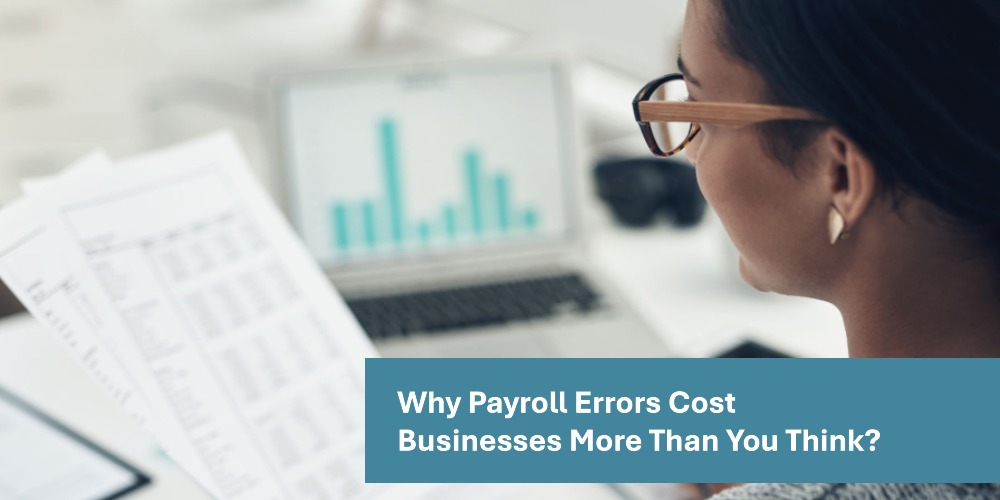Payroll errors don’t just mess with the numbers. They shake trust. Think about it when paychecks are wrong, even once, people stop assuming things are fine. A late payment, a wrong tax code, or a missing hour isn’t just annoying. It’s a red flag.
Staff start to worry about their next paycheck, not just the one you fixed. And when that worry spreads, morale dips. Productivity slides. Good people start scanning job boards. It’s easy to dismiss a payroll mistake as no big deal. But in reality? Every error plants a seed of doubt that can grow into bigger. Costlier problems.
The Financial Impact of Payroll Errors
Fixing a payroll error might cost $291 on paper. But the total impact stretches far beyond that. Let’s say your team has 2,000 employees, and 20% of them experience errors in a given cycle. That’s $100,000 gone. Just like that. That why payroll management is essential for reduce the cost so you can get overcome from the financial impact from your business.
And we haven’t even touched the fines. Around 40% of small to mid-sized businesses get hit with payroll penalties from the IRS. Each one averages $845. Stack those on top of your correction costs, and you’re in deep.
But here’s the kicker. When payroll mistakes drive people to quit, you face recruitment fees, training expenses, and slower ramp-up times. These aren’t just numbers. They’re setbacks that erode growth. Solid systems can stop the bleeding. But ignoring the problem? That gets expensive, fast.
Indirect and Hidden Costs
Payroll errors can show up in the numbers. But the real damage actually happens behind the scenes. The HR loses hours chasing answers. Team leads deal with confusion and complaints. Time spent fixing avoidable problems is time stolen from progress.
And when the mistakes pile up, your best people start scanning LinkedIn. Trust fades. Turnover increases. And each employee exiting means a loss of knowledge, lower productivity, and more money spent in hiring replacements.
These aren’t soft costs. They’re slow leaks that can reduce the momentum of the company. You may not notice them on your dashboard. But they’re there and gnawing at team culture, focus, and the bottom line.
Common Causes of Payroll Errors
Most payroll mistakes don’t come from big problems. They come from small, fixable ones.
- Manual entry errors like one typo can ripple through an entire pay cycle.
- Outdated systems that don’t sync HR, employee benefits management, and time tracking are breeding grounds for mismatches.
- Misclassified workers treating contractors as employees (or vice versa) invites tax fines.
- Weak time tracking that leads to underpayments, overpayments, and compliance issues.
- Poor training in which small oversights slip through cracks faster than expected.
Many teams still rely on patchwork systems or spreadsheets. They think they’re saving money but the truth is, they’re just moving the cost downstream.
Risks Beyond Financial Costs
Money’s not the only thing at risk. Each payroll error is a compliance risk waiting to blow up. Late payments or wrong classifications can trigger audits and legal fees. One bad quarter could bring thousands in fines and months of cleanup.
But here’s where it cuts deeper. Your reputation. In a world where employees share their stories online, payroll mistakes don’t stay quiet. They show up on Glassdoor. They get mentioned in interviews. Future hires start asking questions.
If your brand is tied to trust, reliability, or care, payroll slip-ups undermine that promise. Even if the issue gets fixed, the doubt lingers. One headline or viral post can do more damage than any invoice.
Ways to Prevent Payroll Errors
You can’t afford to leave payroll to chance. Start by upgrading your system. Start using tools that connect HR, payroll, and time tracking into a single platform. This will result in real-time updates and fewer points of failure.
Next, make audits part of your routine. Check your data weekly and not just when someone complains. Spend in training so that your team knows how to use the system and spot the red flags early.
Get serious about time tracking with tools so that it can log hours accurately and feed straight into payroll.
Conclusion
Payroll errors cost more than money. They chip away at trust, damage culture, and expose your business to avoidable risk.
But here’s the opportunity. They’re fixable. With smart tools, proactive checks, and strong training, you can turn payroll from a liability and into a strength for your company.
Yes, upgrading your system or hiring experts costs something. But it pays you back in loyalty, efficiency, and peace of mind. Fixing payroll is a business strategy.
Because when people stop worrying about their paychecks. They start focusing on their work and that’s where real growth begins.

